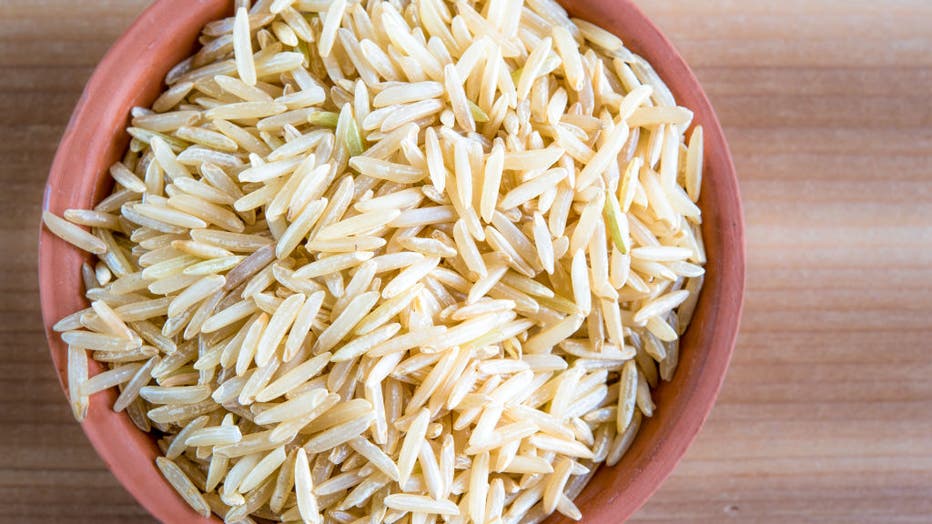Brown rice may increase arsenic exposure, new study finds
How foods can impact your gut health
Saturday is "National Food is Medicine Day" and many Americans deal with a plethora of health issues. LiveNOW from FOX host Christy Matino spoke to Dr. Joan Salge Blake, a clinical assistant professor and dietetics internship director at Boston University's Sargent College of Health and Rehabilitation Sciences on this issue.
LOS ANGELES - Next time you reach for brown rice, you may want to think twice—especially if you’re feeding young children.
A new study has found that brown rice contains significantly higher levels of arsenic than white rice. That includes a 24% higher concentration of total arsenic and 40% more inorganic arsenic—a form of the chemical classified as a known human carcinogen, according to researchers.
Why brown rice has more arsenic
The backstory:
Arsenic is a naturally occurring element found in soil and water, but long-term exposure—especially to its inorganic form—has been linked to a range of health issues, including cancer, cardiovascular disease, diabetes, and cognitive developmental problems in children.
Brown rice tends to absorb more arsenic because the chemical concentrates in the outer layers of the grain, which are preserved in brown rice but stripped away in white rice during processing.
While brown rice is often promoted for its fiber and nutrient content, those outer layers are also where the most harmful contaminants tend to accumulate.
Who is most at risk?
Dig deeper:
Researchers found that children under the age of five may face the greatest risk due to their smaller body size and relatively higher food intake. The World Health Organization also notes that early arsenic exposure can impact brain development and increase mortality risk in young adults.

Brown raw rice on a small clay recipient. (Photo by Roberto Machado Noa/LightRocket via Getty Images)
However, the study emphasized that most Americans do not consume enough brown rice to reach toxic exposure levels. The risk is mainly a concern with chronic, high-volume intake, and the researchers are not calling for people to stop eating brown rice altogether.
How to reduce arsenic exposure from rice
What you can do:
Experts recommend the following to reduce arsenic levels in both brown and white rice:
- Rinse rice thoroughly before cooking
- Cook in excess water (6:1 water-to-rice ratio), then drain
- Rotate grains, including quinoa, barley, or bulgur
- Limit rice intake among infants and pregnant women, following FDA guidance
The FDA has previously issued recommendations to limit rice cereal and rice-based snacks for babies, due to potential links between arsenic and brain development delays.
For most people, experts say that enjoying rice in moderation—especially when paired with proper preparation methods—is still safe.
The Source: This article is based on a recent peer-reviewed study analyzing arsenic content in rice varieties, as well as health guidelines from the World Health Organization and the U.S. Food and Drug Administration.

